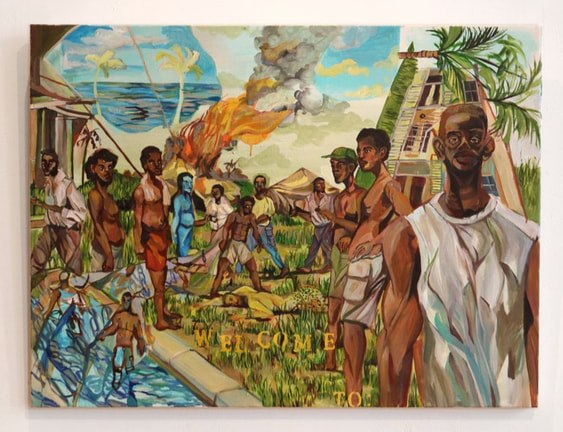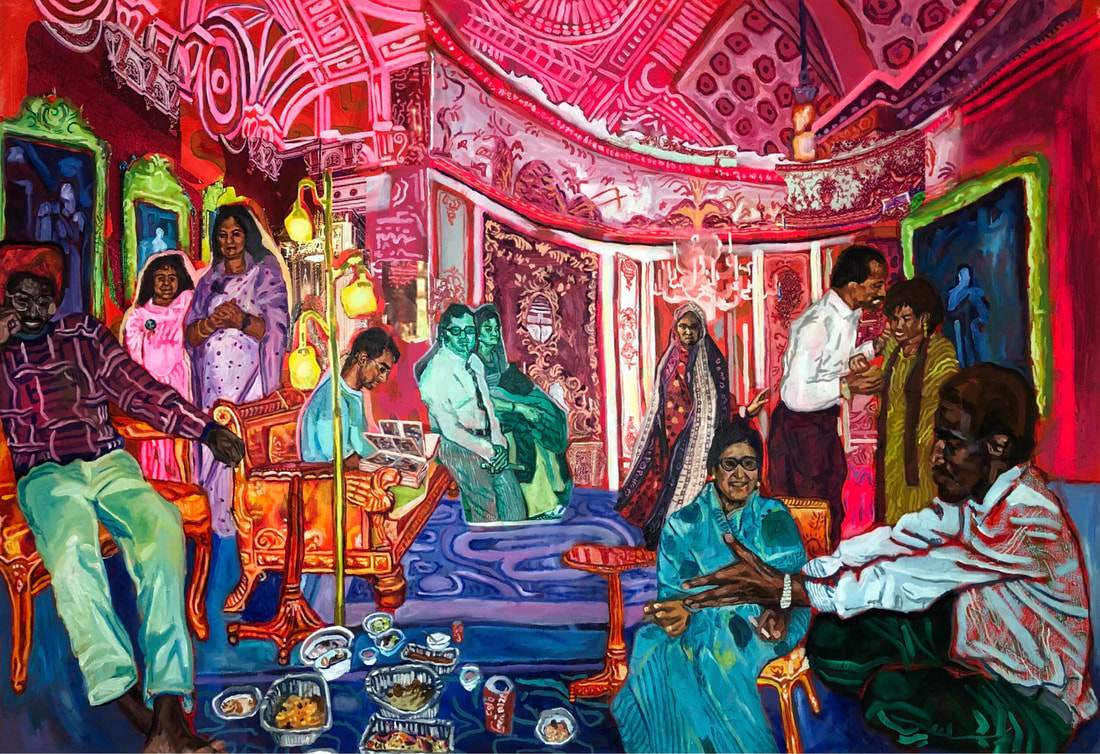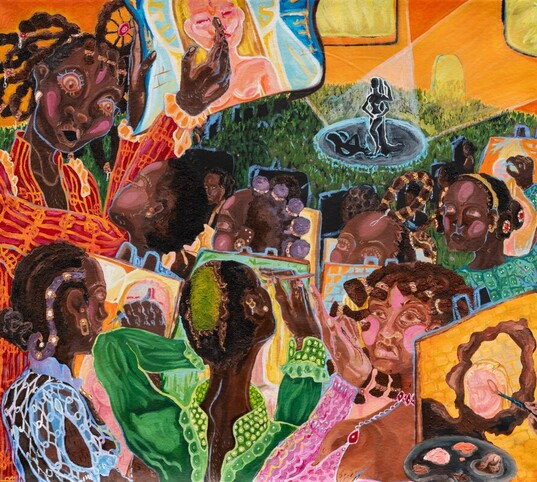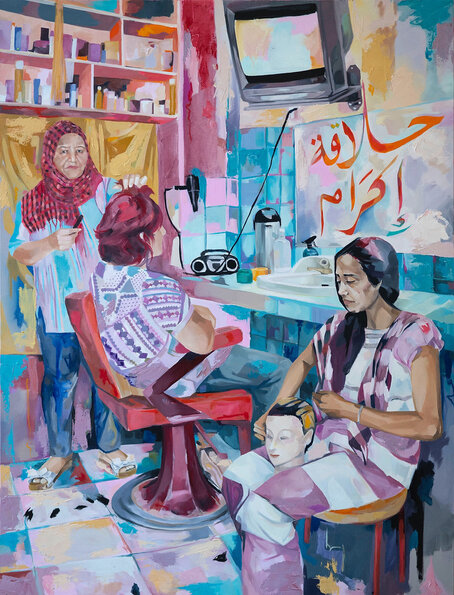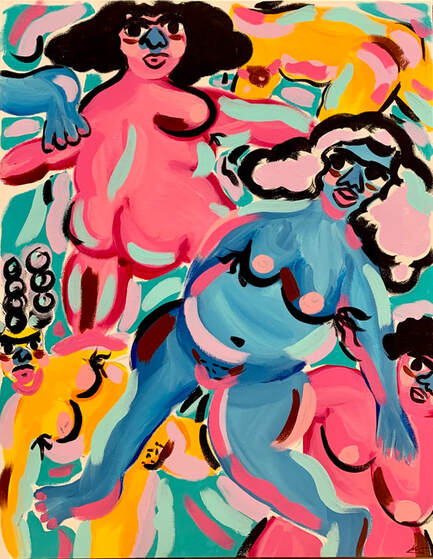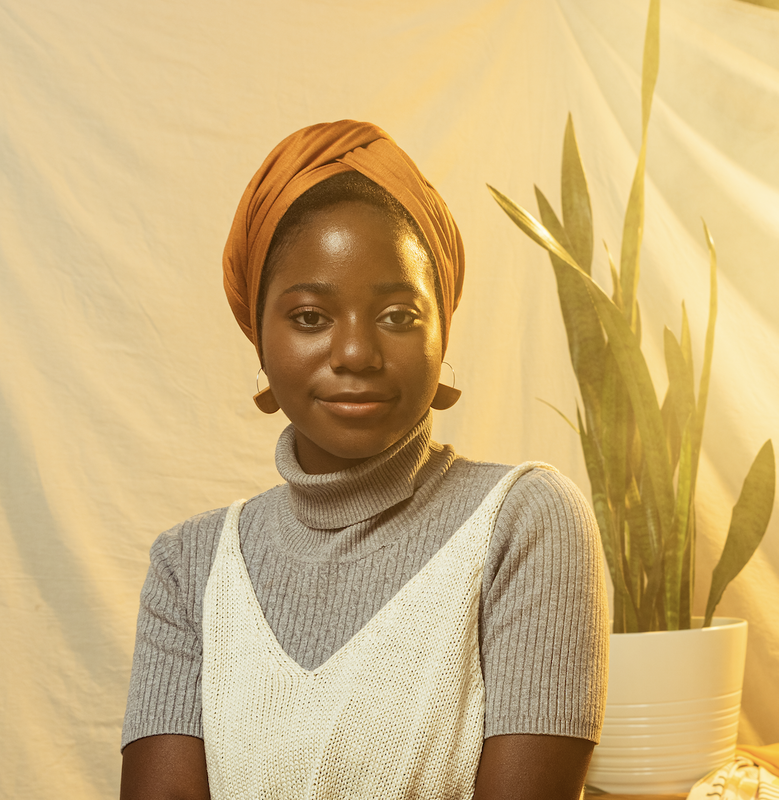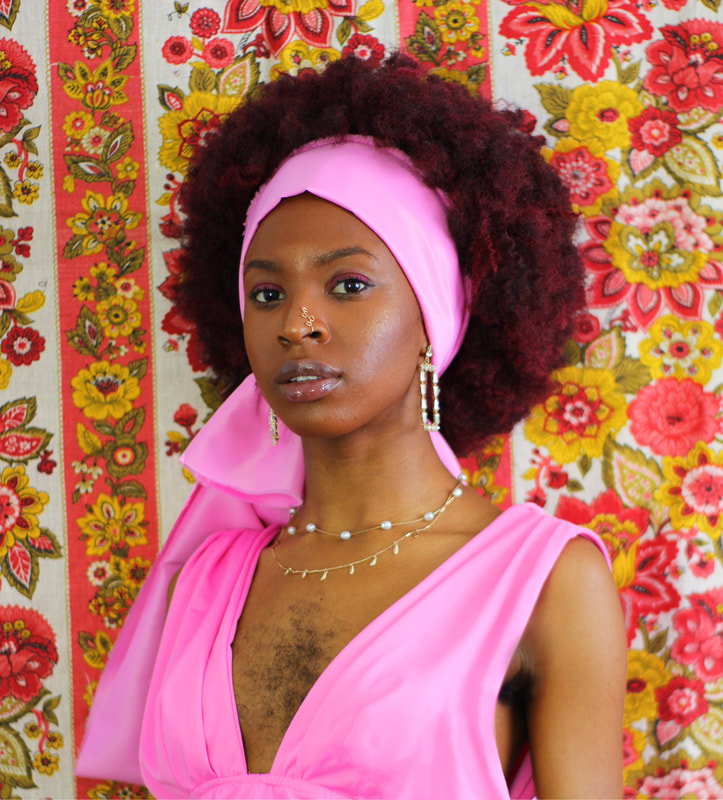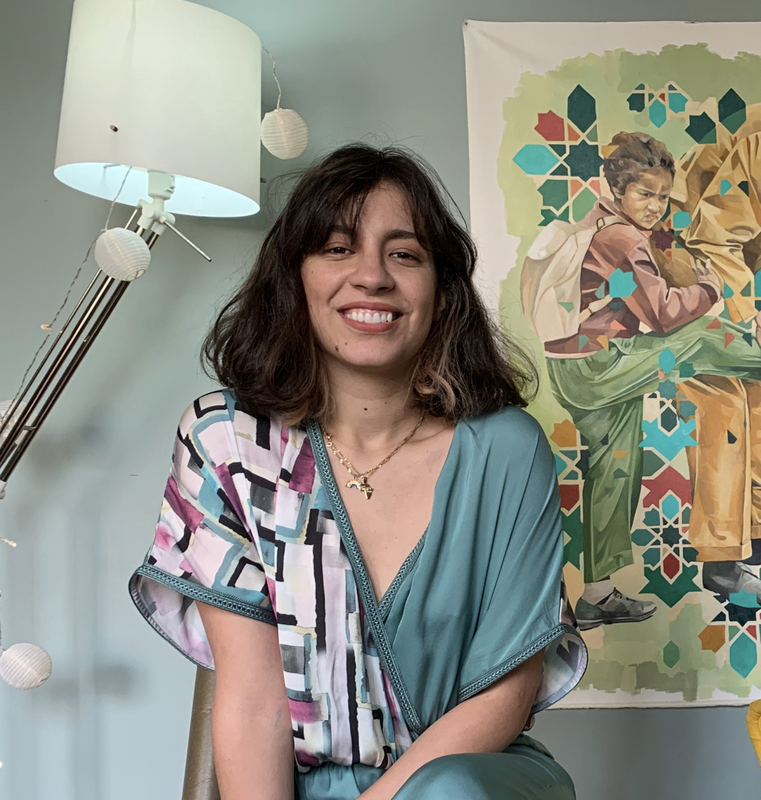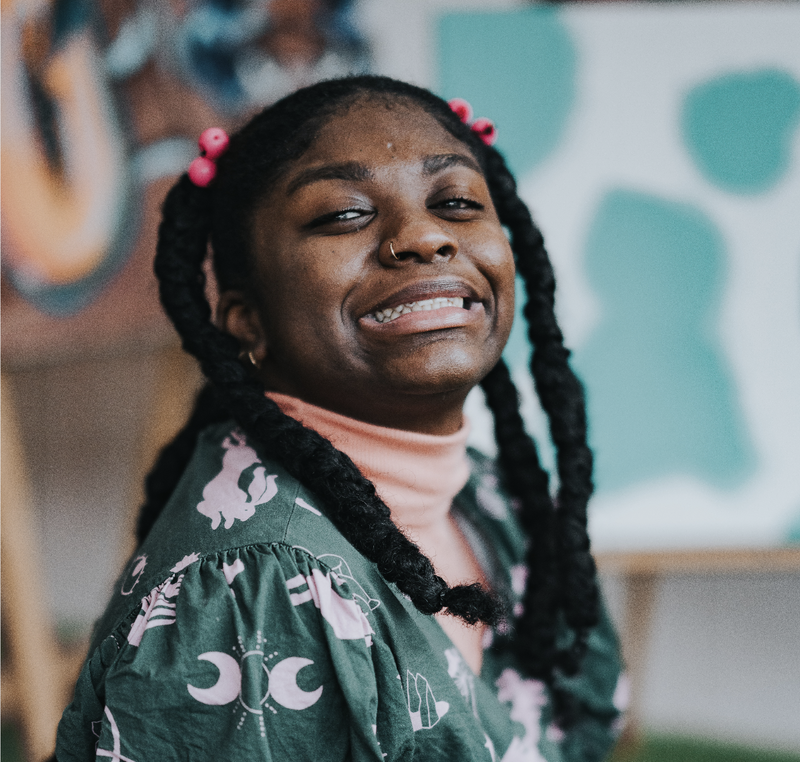Dos à Dos, Face à Face
Laurena Finéus, Kezna Dalz, Sfiya, Esther Calixte-Bea & Sarah-Mecca Abdourahman
March 3rd - April 17th 2022
"Back to back, face to face [Dos à dos, face à face], join hands and change places": so goes the nursery rhyme we used to sing as children. What used to be just a game takes on a poetic sense of unity and a call to move our bodies to offer other perspectives as adults. Laurena Finéus, Kezna Dalz, Sfiya, Esther Calixte-Bea and Sarah-Mecca Abdourahman invite us to play and inhabit their spaces. Through their art and heritage, they offer us in the exhibition Dos à Dos, Face à Face their visual interpretations of what is and can be a body in motion.
Physical, mental, social or political mobility, our bodies, even when immobilized, are animated by our memories and our presence. They persist in moving. To paint a body, to freeze it on a canvas, is to grant oneself the possibility to sit it, to observe it and to approach it for a moment. To stop the movement to better understand it, to look at it, to accept it, to love it.
In their dynamism, presence, symbolisms and tones, the works of these five artists command us to reflect on the representation of our bodies and their impacts on the construction of our imaginary. The gesture can therefore be understood as a protest, decolonization, revolt or reappropriation of a space of domination, but above all as a wish for comfort, acceptance, fun, creation of positive experiences, life.
- Hanna Zeïda, curator
Physical, mental, social or political mobility, our bodies, even when immobilized, are animated by our memories and our presence. They persist in moving. To paint a body, to freeze it on a canvas, is to grant oneself the possibility to sit it, to observe it and to approach it for a moment. To stop the movement to better understand it, to look at it, to accept it, to love it.
In their dynamism, presence, symbolisms and tones, the works of these five artists command us to reflect on the representation of our bodies and their impacts on the construction of our imaginary. The gesture can therefore be understood as a protest, decolonization, revolt or reappropriation of a space of domination, but above all as a wish for comfort, acceptance, fun, creation of positive experiences, life.
- Hanna Zeïda, curator
Selection of artworks
|
In her series "Pour Ses Passagers du Vent" Laurena Finéus explores statelessness, asylum seeking, and the immoral control of waterways - particularly in relation to the Haitian migration crisis that has plagued the country since the 1980s. Her research is particularly anchored around the U.S. naval base at Guantanamo Bay, which held Haitians and Cubans in its camps between 1991 and 1994. Welcome to the indefinite home of the Haitian rafters presents in more detail the deplorable conditions of these "camps". We see Haitians bravely facing the viewer. Laurena Finéus, Welcome to the indefinite home of the Haitian rafters Acrylic and oil on canvas, 36" x 48", 2021 |
|
Sarah-Mecca Abdourahman's painting Buckingham Palace proposes a decolonial reading of black and brown figuration. It functions as a strategy of refusal towards erasure. The figures are seen as thriving and taking over white spaces. This painting employs famous Western images and replaces the figures with family members. It is also a strategy for reclaiming the artist's culture. The process of occupying these spaces and replacing the figures with Abdurahman's family members is a symbolic movement of appropriation or reappropriation. Sarah-Mecca Abdourahman, Buckingham Palace Oil and mixed technics on canvas, 48” x 72”, 2021 |
|
Through her work, Esther Calixte-Bea challenges the lack of diversity in the Quebec art industry and confronts Eurocentric beauty standards by addressing the taboo of female hair and glorifying it on the bodies of her black female figures. The Art of Interpretation depicts women in a classroom painting or drawing a model. Each woman represents what she sees in a unique way and through their drawings we can see that they are drawing a white woman. This painting addresses the effects of colonization on African identity, its complexities and standards of beauty. Esther Calixte-Bea, The Art of Interpretation Acrylic on canvas, 35" x 40", 2020 |
|
In Sfiya's L'Bnate, there are three shots and three women looking in three different directions. Their silent bodies, their moving thoughts and this immense melancholy that brings them back to each other. A raging interior in which they end up losing themselves. To find oneself in a hairdressing salon is to find oneself inside. Either we cuddle each other or we stone each other. Stuck between a mirror and a hair dryer. Time is silent to let our feelings chatter. And the time of a hairstyle becomes so many confidences, laughs and tears. This is how she was a woman among women. Silent and noisy at the same time. Sfiya, L'Bnate Oil and pastel on canvas, 48" x 36", 2021 |
|
Kezna Dalz's The Pals and I Looking Out For Each Other Because If Not, Who Will?, in keeping with the artist's overall practice, is a celebration of the female or non-binary body, in all its beauty and natural, raw state. Without pressure, without performance for the eye of others. It is a demonstration of a refusal to conform to the expectations too often imposed in terms of beauty standards and psychological state. Here, the characters represented are self-accepting, openly vulnerable and display a transparent and fluid freedom. Kezna Dalz, The Pals and I Looking Out for Each Other Because If Not, Who Will? Acrylique sur canevas, 28" x 22", 2021 |
To discover the profile of the artists:
